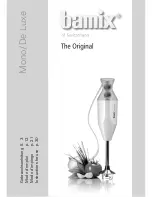
Dark time
DOEPFER
Nuts and bolds of sequencing
Dark time
DOEPFER
Nuts and bolds of sequencing
32
33
4. The Nuts and Bolts of analog Sequencing
In case step sequencers – or sequencers in general – are new to you, please read this section thoroughly.
You will learn about the nuts and bolts of these machines that will help you to grasp Dark Time’s nasty (well,
sort of…) little secrets fully.
If you are an expert already, the study of the following section is not a must-read, but maybe at least en-
tertaining in some ways (we have tried our best not to bore you to tears, mind you). So please feel free to
continue… or not.
4.1. A very brief history of step sequencers
Since the 18th century, mostly clockmakers and makers of mechanical musical instruments have tried to
create devices which would generate tonal and musical patterns automatically. The musical boxes of those
days of yore could be called the great-grandfathers of modern sequencers.
Of course it was not possible to alter an existing pattern and if so, only with
a lot of technical effort. Changing the pattern was out of the question once
it had been cast in brass cylinders, etched into iron disks, or punched into
cards (did we hear you say steam calliope or player piano?). By the mid-
20th century, electronics had become widely available for generating sound
but were only used by universities, broadcasters, and the military. In the
1960s Robert Moog and Donald Buchla devised the use of voltage-control
for sound-generating modules independently of each other, and the situati-
on changed quickly: All important parameters of a sound like pitch, timbre,
duration, and level could now be controlled in a relatively easy way by a
handful of low voltages and a bunch of cables, knobs and switches. The
dream of the automated musical instrument that had been around for centu-
ries suddenly was within an arm’s reach. All that was needed was a device
that generated a continuous ”sequence” of voltages to control a series of
pitches. The step sequencer was born.
4.2. „Less is more“, or: Some good reasons for using a step sequencer
Of course we all know that digitalization of musical data is pretty easy and a very common thing to do these
days. Storage and retrieval of complex musical literature (no matter whether a pop song or a symphony) is
possible by today’s technical achievements. Even the performance of a skilled piano player can be re-
corded and stored in an adequately equipped (software-) sequencer and played back by a computer. So
why would we want to mess around with such an anachronistic thing that is just capable of storing sixteen
notes at a time by setting a couple of controls manually? Quite simple: The majority of interesting genres
of electronic music is still characterized by the minimalist trademark rhythm of step sequences with just a
limited number of stages. Think of the ”Cosmic Couriers” of the early 1970s, the repetitive ”robot”-sound of
the proto-techno era, the ”acid”-tracks of the 1990s, or the minimal-techno productions of today. The re-
petitive rhythm of a step sequencer is still an absolutely essential and important stylistic element of many,
many genres of electronic music. It lives from the restriction to absolute simplicity and the hypnotic effect of
endlessly repeating patterns that were and still are the trademark of this music. Thus the step sequencer is,
despite of all its alleged limitations, as important today as it was when it was first introduced.
4.2.1. Squeezing more music out of eight notes
When working with a step sequencer, it would be a wise move to get rid of old-fashioned ways of song-
writing and all theory of melody and harmony first. The step sequencer is made for tactile and sensual
experience and hands-on experimentation. What might seem to be quite abstract and technical at first sight
will soon become very special qualities in their own right – far removed from traditional keys and notes. And
that’s what it’s all about: You will get musical results that would not have been possible by the use of
traditional ways of songwriting on a ”real” (read: „traditional“) instrument, a piece of sheet music or even a
computer. The desired repetitive elements, the subtle evolution within patterns, and finally the equality of
melody and timbre will come into being almost automatically.
This opens up one more important perspective – the somewhat ”technical” and apparently ”unmusical” in-
terface of a step sequencer gives you direct hands-on access to each step of the pattern. A device like Dark
Time enables the artist to interact with musical patterns in many ways by just hitting one or two controls or
flicking a switch. No need to mess around with a mouse, editing-windows, and QWERTY keyboards.
Apart from that, you are always free to record a rocking pattern into your computer sequencer in order to
use it as a part of a bigger composition and to free up Dark Time for creating new and even more rocking
patterns.
Another interesting aspect is the fact that you cannot only use your step sequencer to control pitch but also
the parameters of a sound of an external synthesizer in the same intuitive way– e.g. the cutoff frequency of
its filter. Dark Time’s ”Range” switch produces all voltage ranges that are useful in conjunction with analog
synthesizers.
Dark Time is capable of addressing two registers of eight steps each in parallel. So two parameters of a
sound can be accessed independently, e.g. pitch and filter frequency, volume and timbre etc. Now let two
registers run against each other or one of them controlled randomly, play with the jump function and so on.
The sequencer will become a pattern-based sound generator!
Содержание ark time
Страница 1: ...Dark Time Owners Manual V1 2 DOEPFER MUSIKELEKTRONIK GmbH ...
Страница 20: ...38 39 ...
Страница 21: ...Dark Time DOEPFER MUSIKELEKTRONIK GmbH ...





































